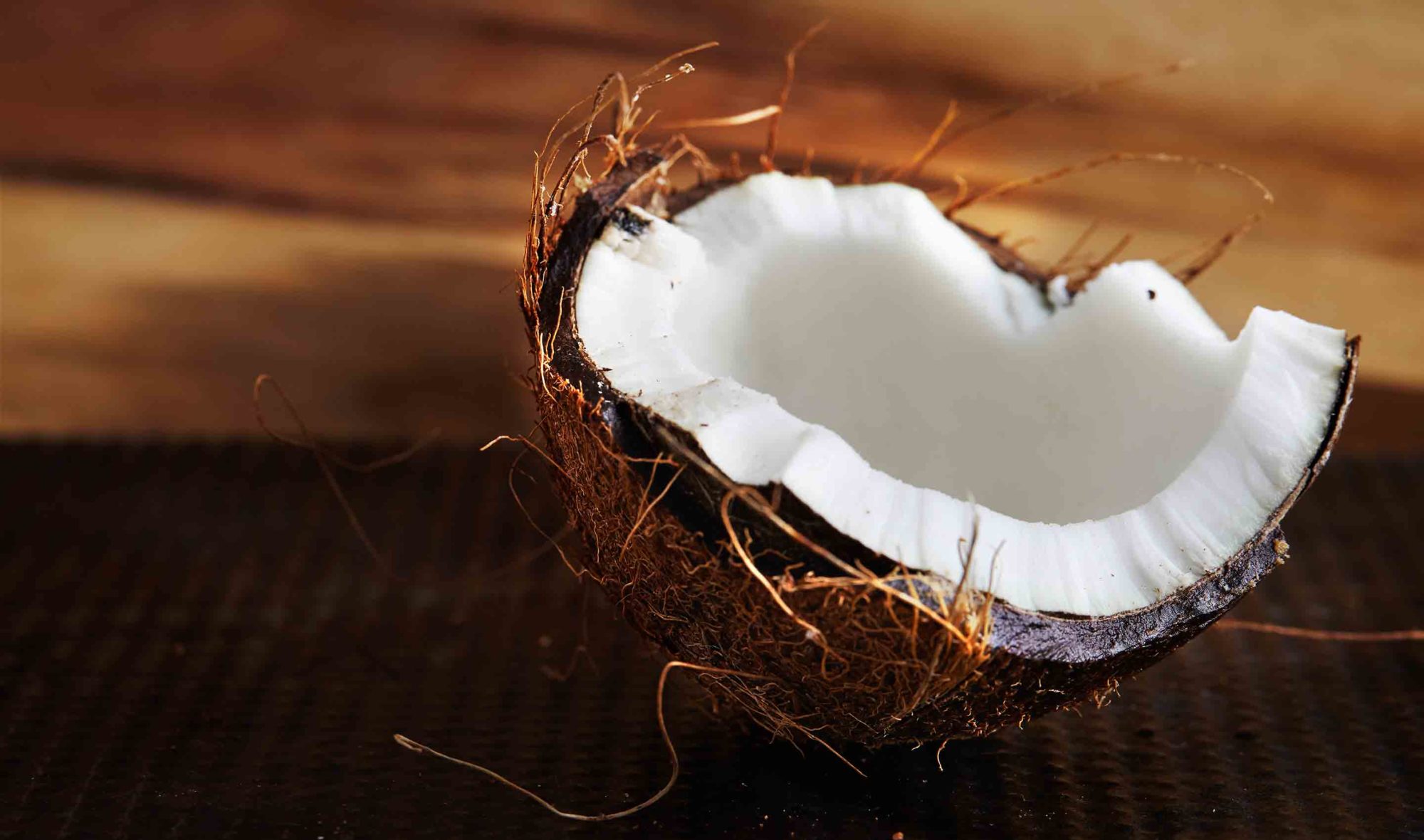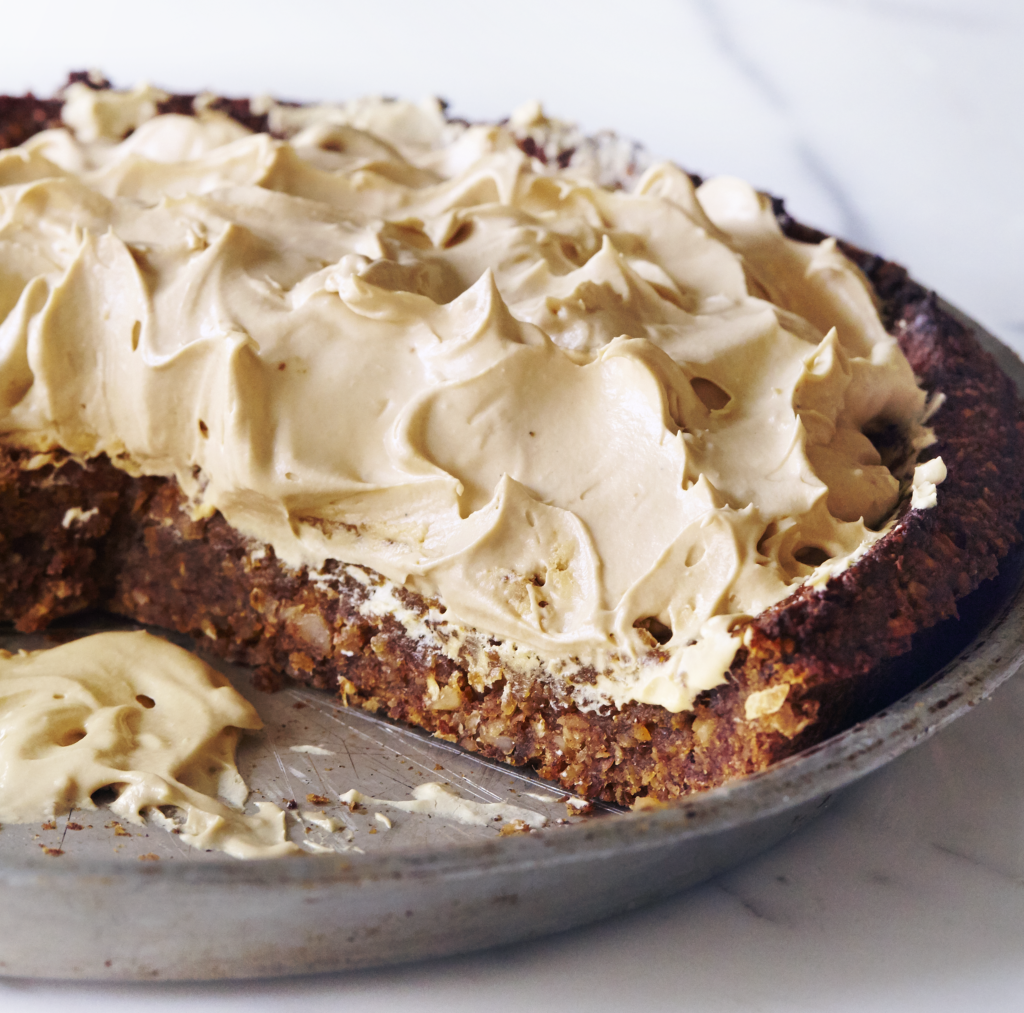
NEW! Lowest Monthly Payment Plan Ever—Master Health Coaching Certification. This week only.

NEW! Lowest Monthly Payment Plan Ever—Level 2 Master Health Coaching Certification.

Coconut is a fruit that grows on trees in tropical climates. The fruit offers white, fleshy meat beneath its hard outer shell. Coconut is an excellent source of healthy fats: ¼ cup of dried coconut offers 6g of fat, plus an offering of minerals such as potassium, phosphorus, and magnesium. Coconut meat can be eaten fresh, though it is is commonly dried. If using fresh coconut, getting to the meat requires a bit of work, but you are well rewarded with flavor if you are willing to do it. Alternatively you can purchase dried coconut from the baking section of your grocery store.
Coconut is a fruit that grows on trees. The coconut provides a source of meat and water. Flour, sugar, oil, butter, and milk are also made from the fruit. This ‘Spotlight on Coconut’ focuses on the white, fleshy meat of the coconut.
The coconut consists of three layers around a hollow center. The outermost layer is green, red, or yellow at first, but turns brown as the coconut matures. The hollow part of the coconut is filled with coconut water. Once a coconut is split open and drained, the white meat lining the walls of the shell is revealed.
Coconut meat is commonly dried and desiccated. In this form it can typically be found in the baking section of grocery stores.
1/4 cup of dried, unsweetened, desiccated coconut has approximately 97 calories, 0.7g of protein, 11.0g of carbohydrates, 2.1g of fibre, 1.0g of sugar, and 6.0g of fat.
Coconut meat is rich in minerals including potassium, phosphorus, and magnesium.
If you purchase a whole coconut at the grocery store, first take the coconut and hold it up to your ear. Shake it up and down a little to see if there is water inside the coconut. If you don’t hear anything at all, the coconut is too ripe.
Once you’ve found a coconut with water inside, check that the coconut is intact by taking a close look at its exterior. Avoid any coconuts that are cracked or punctured (there should be no moisture leaking from its three dark eyes). Next, feel the weight of the coconut – a good coconut is heavy.
Store a whole coconut in the fridge for up to two months. Once opened, the coconut meat will last no more than several days. If you choose to grate the coconut meat, you can freeze it for 8 to 10 months.
To open a coconut, use the dull backside of a cleaver (make sure the sharp blade end is not facing the coconut) and hold the coconut over a bowl. Tap the coconut firmly down the centre with the back of the cleaver, turning the coconut several times as you tap. Do this until you hear (and see) a crack open. Pry the two sides apart and drain the liquid in the bowl (be sure to reserve the liquid; it can be strained and enjoyed as a beverage).
Put the coconut halves on the middle rack of a preheated 400F oven for 20 minutes. This helps separate the meat from the shell. When the coconut halves have cooled, use a flathead screwdriver to wedge between the meat and the shell to pry them apart. Next, take a vegetable peeler and remove the brown skin covering the meat. Next, using a cheese grater or food processor, grate or grind the coconut meat until shredded.
To toast the coconut, spread the shredded coconut on an unlined baking sheet and bake in a preheated 350F oven for 12-18 minutes, stirring a few times while it’s cooking so that it toasts evenly. Thinner strips will toast more quickly than thicker ones. Toasted coconut can be used as a garnish or a snack. For example, it makes a great topping for yogurt or desserts, or an addition to homemade granola.
To make dried coconut, spread the shredded coconut on an unlined baking sheet and bake in preheated 200F oven for roughly 2 hours. Stir it occasionally to ensure that it dries evenly. Once it is dried, remove it from the oven and let it cool at room temperature. Stored in an airtight container at room temperature, the dried coconut can be kept for up to 2-3 months, or 6-8 months in the freezer.

Wow your friends and family with this banana coconut pie. The banana and coconut flavors work in harmony to create a delightful treat for your taste buds.
Prep Time: 30 minutes Cook Time: 45 minutes Yield: 10 slices
For the Crust:
Put all ingredients into your blender or food processor and blend until almost smooth. Using coconut oil or cooking spray, lightly grease a 9” pie plate. Transfer batter from your blender/food processor to the pie plate. Smooth the crust out with the back of a spoon raising it up along the edges of the pie plate. Make sure the crust is evenly spread out. Set crust aside and prepare filling.
For the Filling:
Put all ingredients, except for the eggs, into your blender or food processor (no need to clean out your blender/food processor from making the crust). Blend until fairly smooth. Add eggs and blend until very smooth. Pour filling over crust and bake in preheated 350°F oven for 40-45 minutes or until the filling no longer sticks to your fingers when lightly touched. Once baked, let pie cool on the counter for about 10 minutes before transferring it into the fridge. Let pie cool overnight (or for 6-7 hours). This is important to allow the pie time to properly set.
For the Topping:
Before serving, prepare whipped topping for the pie. To do so, remove your can of full-fat coconut milk from the fridge. Flip the can upside down and open the bottom end. Drain out the coconut milk from the top (or keep it for smoothies), and scoop out the cream on the bottom into a medium-sized mixing bowl. Add the coconut sugar and vanilla extract to your mixing bowl. Using an electric hand mixer, whip the coconut cream until it’s fluffy. Serve each piece of pie with a big dollop of whipped topping.
Store leftovers in the fridge.
Enjoy!
Precision Nutrition’s Encyclopedia of Food expands every single month as we highlight new foods and showcase beautiful food photography. If you’d like to stay up to date, simply click this link. From there, we’ll send you a FREE copy of our recipe book. We’ll also let you know when new and delicious foods are added to the site.
Coconut is a fruit that grows on trees in tropical climates. The fruit offers white, fleshy meat beneath its hard outer shell. Coconut is an excellent source of healthy fats: ¼ cup of dried coconut offers 6g of fat, plus an offering of minerals such as potassium, phosphorus, and magnesium. Coconut meat can be eaten fresh, though it is is commonly dried. If using fresh coconut, getting to the meat requires a bit of work, but you are well rewarded with flavor if you are willing to do it. Alternatively you can purchase dried coconut from the baking section of your grocery store.